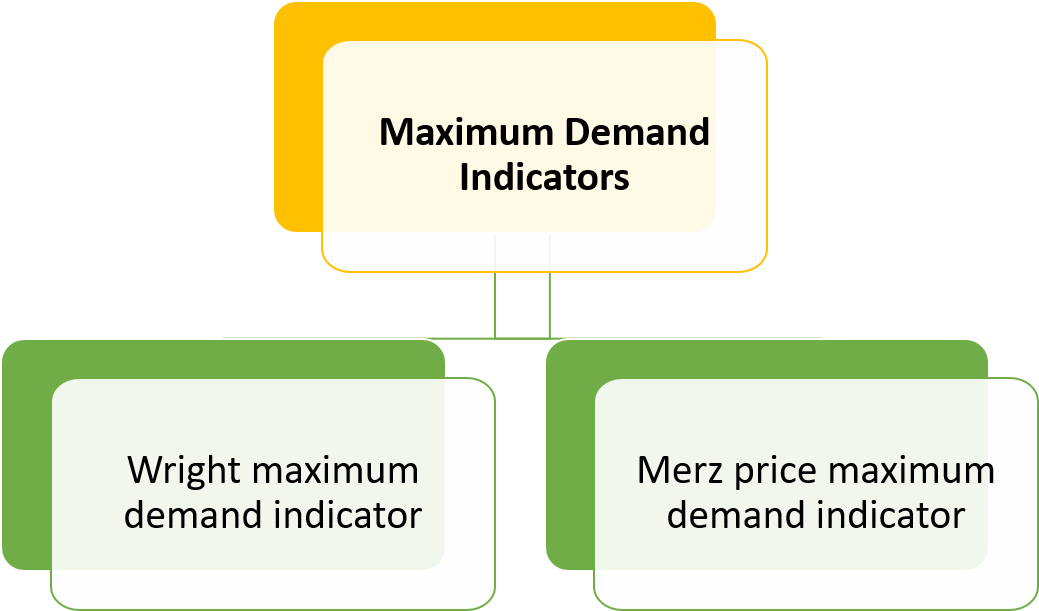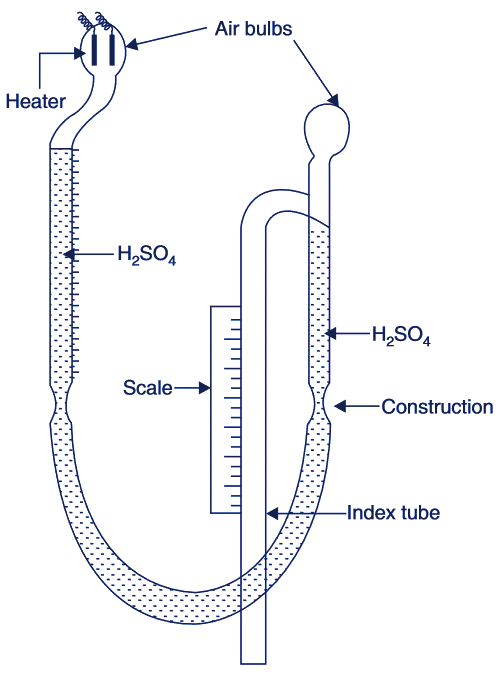The greatest demand of load during a given period is called maximum demand of the consumer. This is given in kW. Note that the load at a consumer’s premises is not the same all the time. It may be zero at one time and may be maximum at another time.
The maxirnuni demand is required to be measured in case of industrial consumers, which are charged at a tariff called Two part tariff. The First part consists of fixed charges on the maximum demand of the consumer and second part consists of the running charges per kWh actually consumed. Total charges are given as:
Rs a/kW max. demand + Rs b kWh consumed.
Types of Maximum Demand Indicators

The maximum demand indicators are of the following types:
- Wright maximum demand indicator.
- Merz price maximuni demand indicator.
Wright Maximum Demand Indicator
This is the earliest type of demand Indicator. It actually indicates the maximum current flowing in the consumer’s premises irrespective of voltage and power factor.

Fig. 1: Wright Maximum Demand Indicator
Construction of Wright Maximum Demand Indicator
The indicator has a sealed U shaped glass tube, which has air bulbs at its both ends. These bulbs are of the same capacity and contain natural air (Fig. 4.16). The remaining tube is filled with a liquid of low temperature coefficient like sulphuric acid (H2S04). The demand is indicated by the level of this liquid. One bulb contains a heater element, leads of which are connected with the circuit, whose demand is to be measured, with the second bulb one Index tube and a scale is attached. Both the limbs of the tube are provided with constrictions (narrow points) to prevent transfer of air from one bulb to the other.
Working of Wright Maximum Demand Indicator
For measuring demand, heater of the instrument is connected in the circuit. When current of the circuit flows through the heater, it heats up the surrounding air of the bulb which expands and presses down the liquid (H2S04) in the tube. The liquid also expands and due to expansion it rises into the other limb; and spills (overflows) into the index tube. The level of liquid in the index tube can be read on the attached scale; which gives the maximum current or maximum demand for a given period.
The instrument needs resetting when the liquid in the imidex tube is drained back into the tube for the next recording.
Merz Price Maximum Demand Indicator
The wright demand indicator described above is a separate unit but merz price demaiid indicator is not a separate unit, but it is an attachment which can be fitted with any energy meter. This instrument can read either maximum current or maximum power taken by a con sumer in a given period (like half an hour or so). Its reading changes at a constant rate with the change of load hence, scale is uniform. Moreover it is more accurate than the wright demand indicator but it is more expensive.
Construction and Working of Merz Price Maximum Demand Indicator
It consists of a special uniformly calibrated dial with a pointer driven by a gear train and a pin which is coupled to the energy meter (Fig. 2). The pin drives forward the pointer for a definite period (usually half an hour) and the pointer of the dial moves to read the energy consumed. After this period the pin is disengaged and the pin is brought to zero position, but the pointer remains at its first reading. After the same period again, the pin moves forward but pointer will move forward oniy if the energy consumed in this period is more thaii the previous reading. In this way, for every half an hour. the pin is engaged/disengaged and at the end of a day (or month or year), maximum demand (in kW/kVA) will be given by the reading of the pointer.

Fig. 2: Merz Price Maximum Demand Indicator